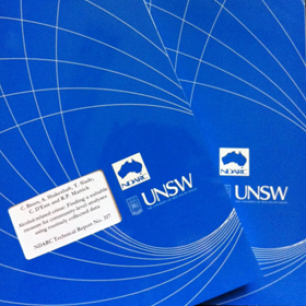NDARC Technical Report No. 241 (2006)
EXECUTIVE SUMMARY
Drinking alcohol is considered a normative behaviour in adolescence, with adolescent drinkers the majority of consumers for some beverages. One of the new and increasingly popular beverages are ‘ready to drink’ (RTD) preparations. An RTD is a spirit or wine and a non-alcoholic drink, served in a pre-mixed format. The most popular of these products are mixtures of non-alcoholic beverages such as milk and soft drinks with alcoholic beverages, typically spirits. These RTDs are becoming increasingly popular, particularly among adolescent drinkers. This study aimed to determine the palatability of a range of alcoholic and non-alcoholic beverages to teenagers and young adults. Specifically to: (1) determine which beverages are most palatable to the adolescents and young adults; (2) if this pattern changes with age; and (3) the extent to which packaging affects the palatability ratings.
A convenience sample of 350 participants was recruited, 70 in each of five age groups. Participants were grouped according to age into 12–13yrs, 14–15yrs, 16–17yrs, younger adults of 18–23yrs, and older adults of 24–30yrs. The experimental drinks included three sets of RTDs and their components: 1) Coke, Jim Beam Bourbon and their mix bourbon & Coke; 2) chocolate milk, vodka and their mix Vodka Mudshake; and3) Raspberry Fanta, Bacardi and their mix Watermelon Bacardi Breezer. Participants also tested popular alcoholic beverages, Tooheys New Beer, Jacobs Creek Chardonnay and a novel beverage Wintermelon Tea.
The study identified that RTDs should not be treated as a homogenous group, as those with different alcohol and non-alcoholic combinations and their packaging are perceived by adolescents in very different ways. As in most aspects of the study, the palatability of alcohol and the appeal of its packaging increased with age; however, chocolate Mudshake, and to a lesser extent watermelon Breezer, performed more like their soft drink base than their alcohol component. This suggests that great caution should be exercised when using milk as a base for an RTD, particularly with an alcoholic base that is less readily detected by adolescents, such as vodka. Similarly, caution should be exercised when mixing any soft drink base with vodka in an RTD, and further research is urgently required on these issues.
Given that a large proportion of very young adolescents felt that RTDs were packaged to appeal to them, awareness should be drawn to the way these products are being markted. Alcoholic beverages such as wine, beer and bourbon are successful at not targeting adolescents and, therefore, attention should be given to the way these products are being promoted and observed in the future marketing of RTDs.
Citation: Copeland, J., Gates, P. Stevenson, D. and Dillon, P. (2006) Young people and alcohol: Taste perceptions, attitudes and experiences, Sydney: National Drug and Alcohol Research Centre.


